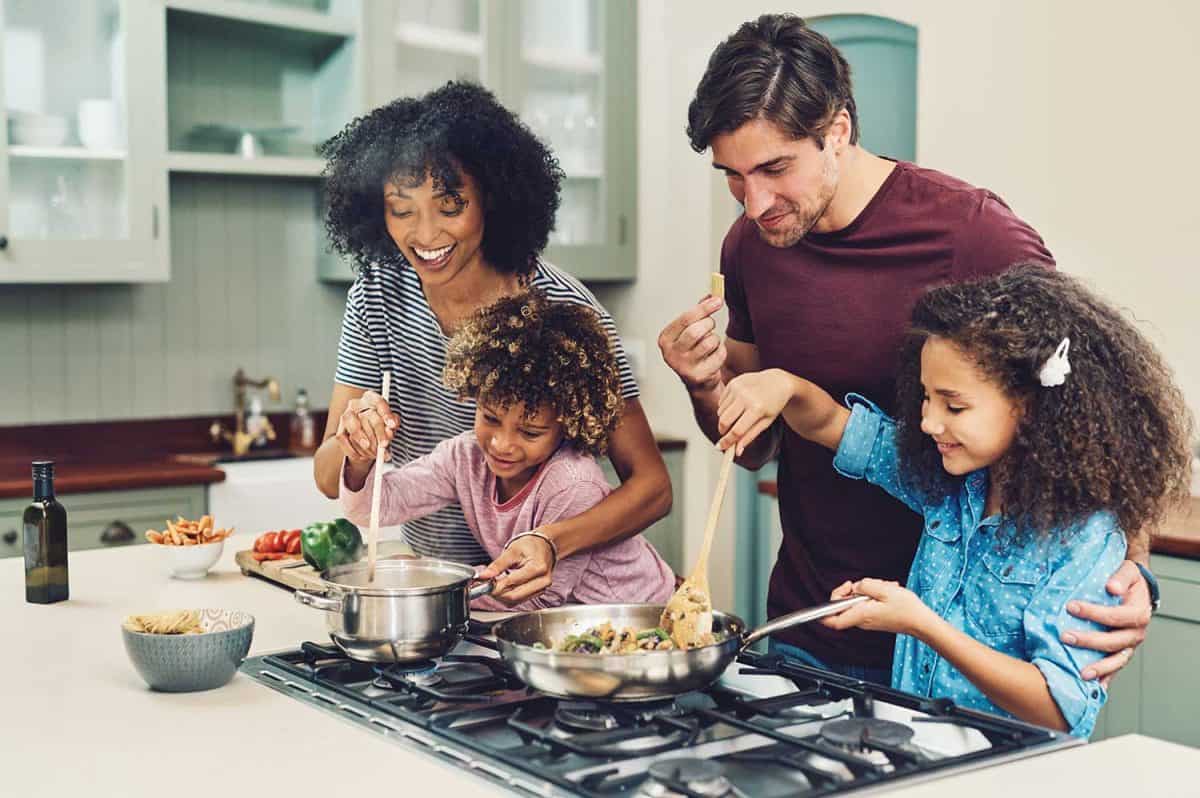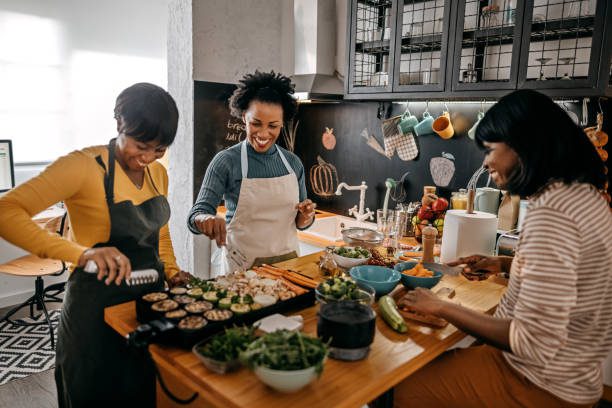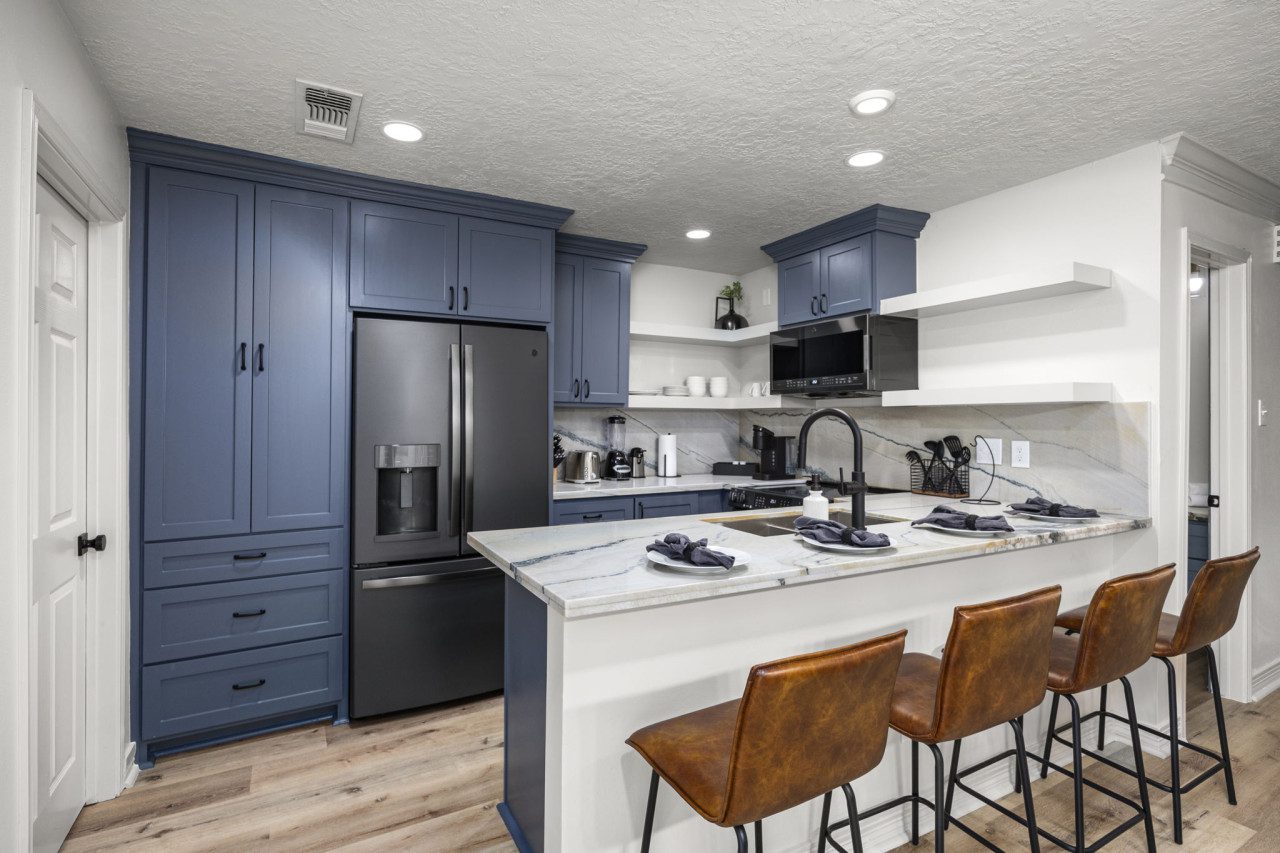In the world of travel, connections are often as meaningful as destinations. While living rooms are designed for comfort and conversation, shared kitchens spark a different kind of connection — one rooted in collaboration, storytelling, and the universal love of food. Across hostels, vacation rentals, and co-living spaces, the shared kitchen has become the new heart of human connection.
In this blog, we’ll uncover six surprising reasons travelers bond faster in shared kitchens than in living rooms, exploring how cooking, dining, and shared rituals transform strangers into instant friends.
1. The Shared Kitchen Activates a Sense of Purpose

Unlike a living room, where social interaction often revolves around passive entertainment, a shared kitchen invites active participation. Cooking together gives travelers something meaningful to do, rather than simply talk about. The rhythm of chopping vegetables, stirring sauces, and passing ingredients creates natural teamwork.
Studies in behavioral psychology show that people bond faster when they cooperate on goal-oriented tasks — even more so when the task involves creativity and shared satisfaction. In a shared kitchen, every traveler becomes a contributor, not a spectator.
This shared sense of purpose breaks barriers quickly. Whether travelers are cooking a communal pasta dinner or baking local bread recipes, they’re building trust, laughter, and shared memories — one dish at a time.
👉 Harvard Gazette highlights that communal experiences strengthen social ties and increase feelings of belonging — a foundation every traveler craves.
2. Food as a Universal Language in the Shared Kitchen

A shared kitchen speaks a language everyone understands — food. When travelers come from different parts of the world, words might fail, but flavors never do. The act of cooking becomes a form of cultural storytelling: one traveler makes Thai curry, another shares homemade tortillas, and suddenly, the kitchen becomes a global classroom.
This exchange transforms the kitchen into a cultural bridge, helping travelers communicate without needing fluency in each other’s languages. Food becomes the translator.
In contrast, living rooms often rely on conversation or shared media, which can be isolating for those less fluent or introverted. The kitchen, on the other hand, levels the playing field — everyone can taste, share, and smile.
🌍 For inspiration, see Atlas Obscura’s global cooking experiences that connect travelers through hands-on local food adventures.
3. The Shared Kitchen Stimulates the Senses (and Emotions)

There’s something profoundly bonding about smells, sounds, and textures. The sizzle of garlic in olive oil, the aroma of freshly baked bread — these sensory experiences create emotional associations. A shared kitchen engages multiple senses simultaneously, amplifying connection and memory.
Neuroscience research shows that shared sensory experiences, especially involving food, boost oxytocin — the hormone responsible for trust and empathy. This is why a meal shared in a kitchen feels more intimate than a chat on the couch.
Living rooms, by comparison, often involve less sensory stimulation — soft lights, static seating, and minimal activity. But in a kitchen, energy flows, laughter echoes, and emotions rise and blend like the flavors in a simmering pot.
For more on sensory-based bonding, check out Greater Good Science Center, which explores how shared experiences cultivate empathy and connection.
4. The Shared Kitchen Encourages Authenticity and Vulnerability

Something magical happens when people cook together — pretenses drop. In a shared kitchen, travelers are often in their most genuine state: messy, focused, maybe even a little flustered. There’s no need to perform or impress.
Preparing food reveals a person’s habits, humor, and personality. Someone might hum while stirring, laugh over a cooking mistake, or share a family recipe passed down for generations. These small, authentic moments build deeper connections than any formal conversation in a living room could.
Travelers who meet in a kitchen often leave with lasting friendships — or even travel partnerships — because they’ve seen each other’s real selves.
💡 According to Psychology Today, vulnerability and shared imperfection are key ingredients in forming meaningful human bonds.
5. The Shared Kitchen Fosters Equality and Shared Ownership

A living room can subtly divide — some people take the best seats, others stay quiet in the corner. But in a shared kitchen, hierarchy fades. Everyone has a role: one chops, one stirs, another sets the table. The physical setup encourages movement, interaction, and mutual contribution.
This equality fosters what sociologists call communal belonging. Each person’s input matters, and collaboration feels natural. Unlike in the living room, where group dynamics can feel passive or unbalanced, the kitchen thrives on participation and inclusion.
Even cleaning up becomes a bonding ritual — washing dishes side-by-side, sharing leftovers, laughing over who burned the garlic. These collective acts turn the shared kitchen into a symbol of community.
🏡 The Cohabs community model demonstrates how shared kitchens are central to creating friendships among global travelers living in coliving spaces.
6. The Shared Kitchen Creates Shared Stories Worth Remembering

While a living room might host conversations or games, a shared kitchen births stories. A failed soufflé that turned into a midnight pancake party. A group of travelers improvising a meal with limited ingredients. The stranger who taught everyone how to make sushi rolls using a towel.
These moments stick because they engage emotion, humor, and shared triumph (or failure). Each traveler becomes part of a collective narrative that continues beyond the trip.
Living rooms tend to hold talks, but kitchens hold memories. And when travelers return home, it’s not the furniture they recall — it’s the laughter that filled the air as they cooked side by side.
📸 Many travelers now post these spontaneous cooking moments on social media, celebrating authentic travel connection. Platforms like Culture Trip even highlight global destinations where culinary sharing is central to the travel experience.
Why This Matters for Hosts and Travelers Alike

For vacation rental hosts and property owners, understanding the power of the shared kitchen can transform guest experiences. A well-equipped, inviting kitchen doesn’t just add value — it builds community.
Hosts who design open kitchen layouts, communal dining areas, and inclusive cooking tools create environments that foster meaningful connections. Even small touches like spice racks, local cookbooks, or a communal dining table can encourage guests to interact and bond.

For travelers, choosing spaces with it means opening up to unexpected friendships and deeper cultural immersion. Instead of scrolling through phones on a sofa, guests share meals, laughter, and stories that linger long after checkout.
Final Thoughts: The Shared Kitchen as the Soul of Travel
In a world where connection often feels fleeting, the shared kitchen reminds us of our common humanity. It’s not just about food — it’s about collaboration, compassion, and the small rituals that bring people together.
While the living room might host comfort, the creates community. And that difference is what makes travel unforgettable.
So next time you’re booking a stay or designing one, look beyond the couch — and into the kitchen. Because that’s where the world meets, cooks, and connects.
